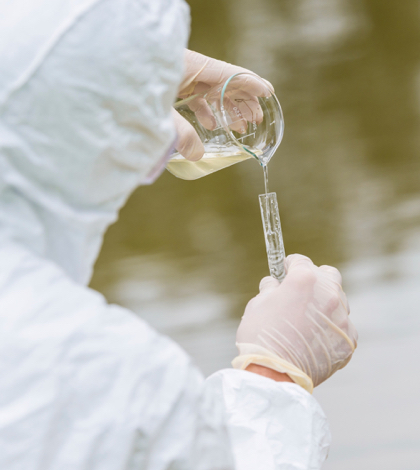Department of Defense officials have reportedly identified 664 sites nationwide –85 of which are in California including March Air Reserve Base—that are scheduled to be tested to determine if the chemicals perfluorooctane sulfonate (PFOS) and perfluorooctanoic acid (PFOA) are in sediments and groundwater surrounding the military base.
Both chemicals were used in foams that extinguish flammable liquids around runway areas. The chemicals were phased out by 2010.
PFOS and PFOA are fully fluorinated, organic compounds and the two perfluorinated chemicals (PFCs) that have been produced in the largest amounts within the United States. However, the non-reactive chemicals don’t break down naturally.
In May 2006, the Environmental Protection Agency (EPA) Science Advisory Board suggested that PFOA cancer data are consistent with the EPA guidelines for the Carcinogenic Risk Assessment descriptor “likely to be carcinogenic to humans.” Both chemicals have been listed as “emerging contaminants” by the EPA. Additionally, laboratory animal testing has shown that the chemicals have been linked to several cancers as well as thyroid and kidney problems. Animal testing data indicates that PFOA can cause neonatal death and may have toxic effects on the immune, liver and endocrine systems.
A national spokesperson for the Air Force, Mark Kinkaid, indicated that officials were still compiling information to establish when and where testing would be done. March Air Reserve Base has confirmed that the base is on the list of 664 sites but no additional Air Force information has been released at this time.
 California Water News Daily Your Source For Water News in California
California Water News Daily Your Source For Water News in California


